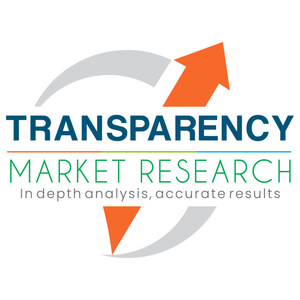Competition Intensifies Among Vendors of Neurorehabilitation Devices as Intensive Research Becomes a Priority, says TMR
ALBANY, New York, July 12, 2016 /PRNewswire/ --
Players in the healthcare and medical devices industry have recognized the growing need for neurorehabilitation devices owing to the surging rise in the incidence of various neurological disorders. As a result, manufacturers of neurorehabilitation devices such as St. Jude Medical, Inc., Ekso Bionics Holding, Inc., Medtronic plc, Hocoma AG, Bioness, Inc., and AlterG, Inc. have begun offering a wide variety of technologically advanced and more effective devices, including brain-computer interfaces, wearable devices, neurorobotic systems, and non-invasive brain stimulators. Among the aforementioned companies, Transparency Market Research has found that Medtronic, St. Jude Medical, and Hocoma - the top three vendors catering to the demand for neurorehabilitation devices - together accounted for a 50% share in the global market.
Download Free PDF Brochure for Research Insights: http://www.transparencymarketresearch.com/sample/sample.php?flag=B&rep_id=12791
"Over the past century, brain research has made tremendous progress and has almost been keeping up with the pace at which neurodevelopmental disorders are growing," a TMR analyst states.
"Technological as well as scientific research is being carried out in various disciplines and sectors, demonstrating the potential of the neurorehabilitation devices market.
The goal of neurorehabilitation device manufacturers is to lessen the long-term disability of the patient, maximize their quality of life, and improve their overall psychosocial outcomes. Innovative strategies for various neurological disorders are being developed by integrating wearable technology, nanotechnology, robotics, Internet of Things, and non-invasive medical technologies with the neurorehabilitation. A case in point would be St. Jude Medical's Proclaim ELITE. This is the first and only non-rechargeable and upgradeable spinal cord stimulation system that has received approval for the delivery of burst stimulation to relieve chronic pain that can be treated with neurorehabilitation.
"Strategic collaborations for business expansion is another crucial move manufacturers of neurorehabilitation devices have been making to tighten their hold on the global market," the author of the study claims. Medtronic's purchase of Sapiens Steering Brain Stimulation in August 2014 and its acquisition of Covidien plc in June 2014 has not only expanded Medtronic's portfolio but also accelerated the company's growth.
Browse Regional PR: http://www.europlat.org/global-neurorehabilitation-devices-market-to-reach-us-3-2-bn-in-2023-transparency-market-research.htm
Dearth of Neurological Services a Deterrent in Low-income Countries
The surging incidence of neurological disorders, coupled by the rise in funding by private and government organizations have fueled the demand for neurorehabilitation devices, TMR states. These factors are anticipated to drive the opportunity in this market to rise at a 15.5% CAGR from 2016 to 2024. The value of the neurorehabilitation devices market is poised to increase from US$894.9 mn in 2015 to US$3.2 bn by the end of the forecast period.
"The fact that neurological resources and services are disproportionately scarce, especially in developing and low-income countries, acts as a major impediment to the growth of the neurorehabilitation devices market," the analyst states. "Moreover, there is a high disparity in the number of trained and skilled professionals in comparison to the target population in emerging economies." This, along with the high cost of rehabilitation therapy, gives rise to considerable challenges in the large-scale adoption of neurorehabilitation devices.
High Cost of Treatment is Likely to Restrict Wide-scale Adoption in APAC
North America and Europe are the largest revenue generators and dominated the global market in 2015. This can be primarily attributed to the growing prevalence of neurological conditions, improvement in technology, the rising awareness regarding neurorehabilitation devices and centers, and the presence of a well-established healthcare infrastructure. Although Asia Pacific is an immensely promising market for neurorehabilitation devices and is projected to emerge as the fastest developing regional market by 2024, it is the high cost of treatment that creates a barrier in the seamless adoption of these devices in Asia Pacific, leading to a major deterrent in the neurorehabilitation devices market.
This review is based on the findings of a TMR report titled "Neurorehabilitation Devices: Global Industry Analysis, Size, Share, Growth, Trends, and Forecast 2016-2024."
About Us:
Transparency Market Research (TMR) is a U.S. based provider of syndicated research, customized research, and consulting services. TMR's global and regional market intelligence coverage includes industries such as pharmaceutical, chemicals and materials, technology and media, food and beverages, and consumer goods, among others. Each TMR research report provides clients with a 360-degree view of the market with statistical forecasts, competitive landscape, detailed segmentation, key trends, and strategic recommendations.
Contact:
Mr. Sudip. S
90 State Street, Suite 700
Albany, NY 12207
United States.
Tel: +1-518-618-1030
USA - Canada Toll Free: 866-552-3453
Email: sales@transparencymarketresearch.com
Website: http://www.transparencymarketresearch.com
Blog: http://www.tmrblog.com/




Share this article